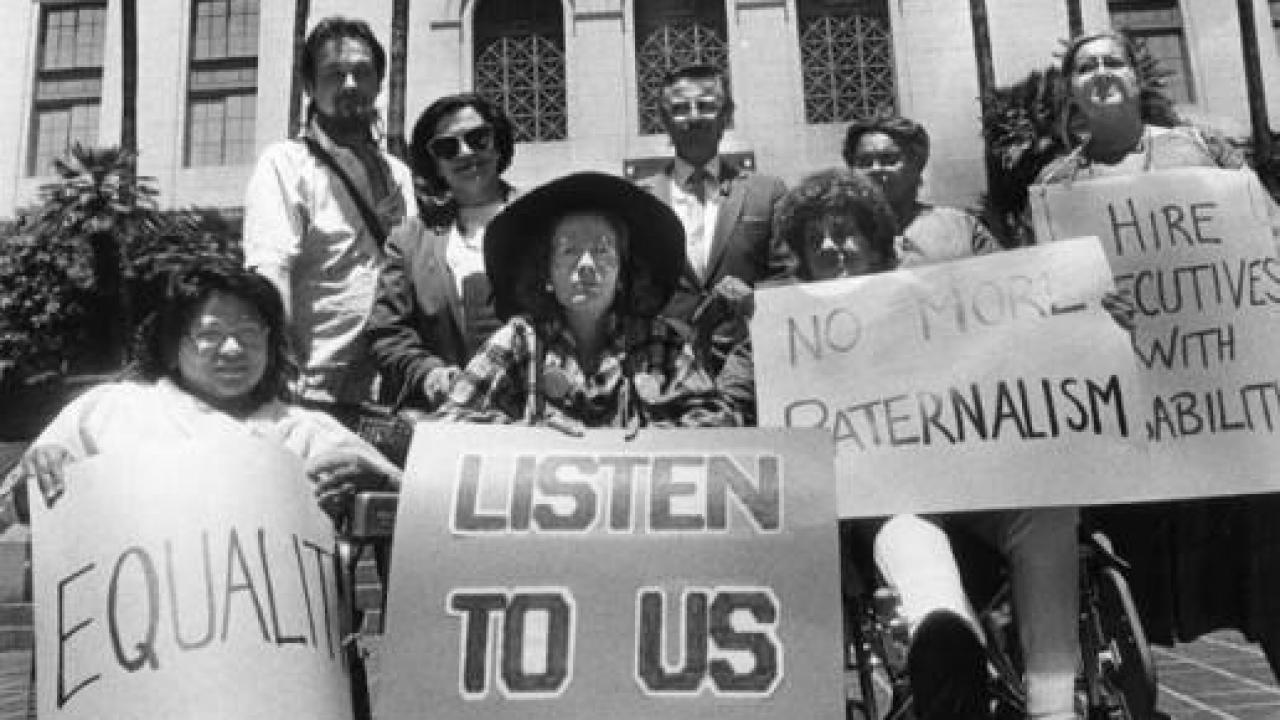
More than Helen Keller and FDR: Teaching the FAIR Act through Disability History
According to historian Douglas C. Bayton, restrictions on immigration at the turn of the 20th Century were designed to keep disabled people, labeled as “defective,” out of the country. Hiroshima Maidens were Japanese women who were deeply stigmatized as their bodies, covered in Keloid scars, were disfigured by the Hiroshima bomb blast that ended WWII. And in 1977, approximately 150 disability rights protestors started a sit-in at a San Francisco federal building to demand enforcement of Section 504 of the Rehabilitation Act of 1973, which guaranteed certain rights to people with disabilities. “Bringing Disability into FAIR Act Implementation: Going Beyond Helen Keller and FDR,” a new workshop at our History-Social Science Framework Conference series will explore these topics (and other significant moments in history). The conference series starts September 10 at UC Irvine; seven more conferences will be held across California through 2020.
This workshop grew out of a plea from disability historians and K-12 teachers who together noticed that educators still lack high-quality materials to incorporate disability history into their curriculum. Both groups agreed that if students learn about disability history, their learning often starts and ends with famous individuals like Helen Keller and President Franklin Roosevelt. Attempting to move beyond this token inclusion of Americans with disabilities, this new Framework conference session will introduce core themes of disability history, as well as the opportunities for approaching the topic.
Whether teachers fold disability history into existing lessons or develop new curriculum that centers on disability, this session will provide an important foundation of topics and methods to teach disability history responsibly. Moreover, “Bringing Disability into FAIR Act Implementation: Going Beyond Helen Keller and FDR,” will offer teachers concrete strategies and classroom-ready resources to support implementation of the FAIR Act, the 2011 piece of legislation that called for a more inclusive K-12 history-social science education.[1] Tasking elementary, middle, and high school teachers with the important job of covering the role and contributions of LGBTQ individuals, and Americans with disabilities, the FAIR Act broadened the historical actors and topics that students in California should study. Yet, as the LGBTQ history emphasis has received attention, the disability history piece is often overlooked. This session will include accessible media and recommended exercises to provide educators with new tools for incorporating disability history into their classrooms.
To participate in this workshop, register for the new Framework Conference series here.
Emily Smith Beitiks, Ph.D., is Associate Director of the Paul K. Longmore Institute on Disability at San Francisco State University and Beth Slutsky, Ph.D. is Program Coordinator at the California History-Social Science Project.
Photo: Javier Mendoza, "Disabled persons protest at City Hall," 1988, Los Angeles Public Library Photo Collection. Source: Calisphere, https://calisphere.org/item/f586b402ce01473162d3189ed8ec03dd/
[1] SB 48, otherwise known as the Fair, Accurate, Inclusive, and Respectful (FAIR) Act, revised language in the California Education Code (Section 51204.5) to clarify that: “Instruction in social sciences shall include the early history of California and a study of the role and contributions of both men and women, Native Americans, African Americans, Mexican Americans, Asian Americans, Pacific Islanders, European Americans, lesbian, gay, bisexual, and transgender Americans, persons with disabilities, and members of other ethnic and cultural groups, to the economic, political, and social development of California and the United States of America, with particular emphasis on portraying the role of these groups in contemporary society.”
